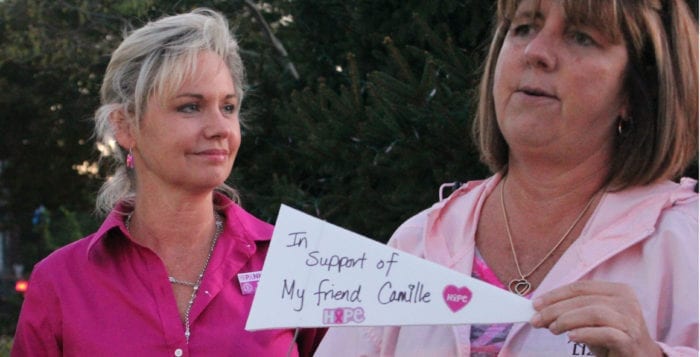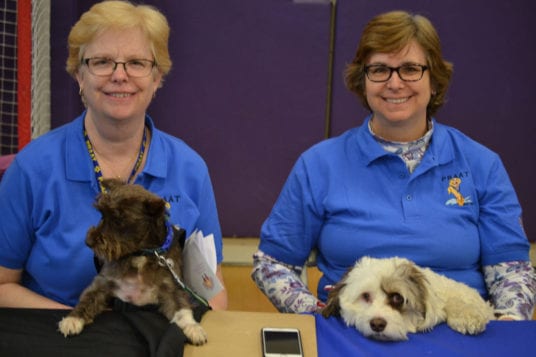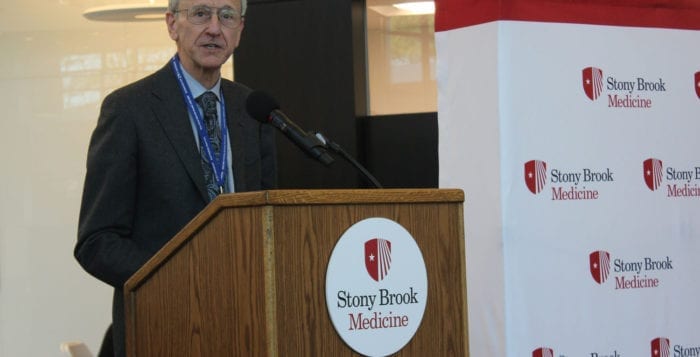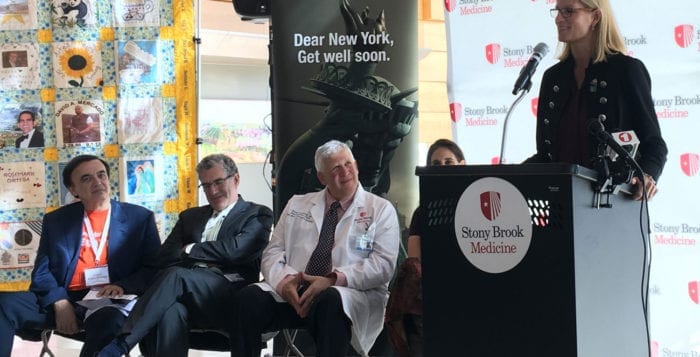Throughout October, a tree at Heritage Park in Mount Sinai will be pretty in pink in celebration of national Breast Cancer Awareness month.
Up to 5,000 lights on the Pink Tree for Hope, which sits in front of the Heritage Center on Mount Sinai-Coram Road and overlooks the park, burned bright during a ceremony Oct. 4 held by Suffolk County Legislator Sarah Anker (D-Mount Sinai) and the nonprofit North Shore Neighbors Breast Cancer Coalition.

The glowing tree will serve as a reminder to passersby of the importance of breast cancer prevention by way of early detection screenings and education. The names of local breast cancer survivors and those who lost their lives to the disease are displayed on little flags around the tree.
“There’s not one person I know that has not been affected by breast cancer in one way or another,” said Anker, whose grandmother passed away after a long fight with the disease. “I am honored to partner with the North Shore Neighbors Breast Cancer Coalition to raise awareness about the prevalence of breast cancer, honor our loved ones lost to breast cancer, and support survivors across Long Island.”
Anker encouraged residents to work together and support groups like the coalition to help find a cure for breast cancer. The North Shore Neighbors Breast Cancer Coalition, founded in 2001 by Sound Beach resident Patti Kozlowski, is a grassroots organization that raises funds to provide non-medical or support services for local families fighting breast, gynecological and other forms of cancer. If someone is out of work for a number of weeks during and after breast cancer treatment, it can be devastating financially, Kozlowski said.
“We need to help raise awareness and hopefully help people understand the magnitude of what we’re dealing with,” said Kozlowski, who will be collecting donations to support the nonprofit’s mission at the park throughout the month. “Treatment is incredibly important.”
Darlene Rastelli, assistant director at the Carol M. Baldwin Breast Care Center at Stony Brook Medicine, set up at a table during the ceremony to spread the word that “early detection is the best prevention.”

The American College of Radiology, Rastelli said, recommends women over the age of 40 have a breast screening once a year.
“It’s so important to screen not only in October, but throughout the year,” she said. “Breast cancer is not a death sentence anymore. If you get your screenings done early enough, it can be managed early and you can survive.”
Miller Place resident Felicia Lopez said she was scared when she was diagnosed in 2011, because she wasn’t educated and assumed the worst.
“I didn’t know anything about it, but the doctors comforted me and told me it was curable,” said Lopez, who is now cancer-free. “You have to be your own advocate. You have to check your own body regularly.”
Before the ceremony, Kozlowski, who started her nonproit as a way to inspire women to come together, wrote her friend Camille’s name on a flag.
“She’s a co-worker of mine who retired Aug. 31 and was diagnosed with breast cancer Sept. 1,” Kozlowski said before placing the flag under the tree. “I think this tree will give people a good feeling to know they’re not alone.”
The Pink Tree of Hope, adorned with lights donated and installed by Bob Koch of Koch Tree Services Inc., will be lit throughout October at 633 Mount Sinai-Coram Road in Mount Sinai.
Learn more about the North Shore Neighbors Breast Cancer Coalition at https://www.facebook.com/NSNBCC/.

























